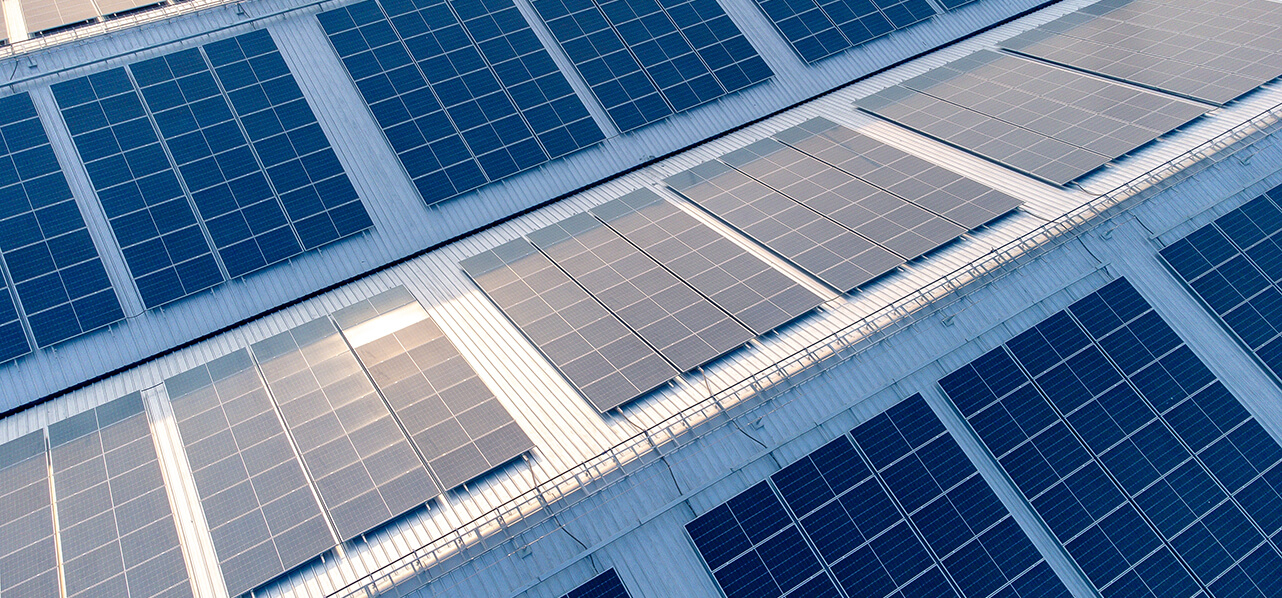"The Vietnamese Government has considered new solar feed-in-tariffs which will be in place for approximately two years."
However, the FiT under Decision No. 11 is only available to projects that achieve commercial operations by 30 June 2019. As a result there has been some uncertainty surrounding projects that do not commission by this date, and whether those projects would receive any FiT.
This uncertainty has now been clarified. On 29 January 2019, MOIT released the first draft Decision of the Prime Minister for the development of solar projects in Vietnam beyond 30 June 2019 (“Draft Decision”) to replace Decision No. 11. The Draft Decision stipulates new FiTs will be introduced, and in place for approximately two additional years, from 1 July 2019 to 2021, with the exact deadline in 2021 to be determined. Solar projects which meet the deadline will benefit from the revised FiT for a 20-year operational term.
Revised FiTs
Under the Draft Decision, the revised FiTs will vary, ranging from 6.59 US cents per kilowatt hour to 9.85 US cents per kilowatt hour dependent on the year, type of solar power technology and region of deployment. This differs from the current FiT under Decision No. 11 in which a fixed tariff applies across all solar power projects (irrespective of solar power technology type and region). The Draft Decision, however, proposes differentiated tariff levels, which vary dependent on the three different irradiation regions of Vietnam and four different solar power technologies.
FiTs from 1 July 2019 to 30 June 2020 (first year):
| Region 1 FiT | Region 1 FiT | Region 2 FiT | Region 2 FiT | Region 3 FiT | Region 3 FiT | |
| VND per KWh | US cents per KWh | VND per KWh | US cents per KWh | VND per KWh | US cents per KWh | |
| Floating solar power | 2,135 | 9.35 | 1,838 | 8.05 | 1,612 | 7.06 |
| Ground-mounted solar power | 2,095 | 9.18 | 1,802 | 7.89 | 1,583 | 6.94 |
| Solar power projects with integrated storage system | Not Applicable[1] | Not Applicable | Not Applicable | Not Applicable | 2,052 | 8.99 |
| Rooftop solar power | 2,448 | 9.85 | 1,933 | 8.47 | 1,697 | 7.43 |
FiTs from 1 July 2020 to a date to be determined in 2021 (second year):
| Region 1FiT | Region 1FiT | Region 2 FiT | Region 2 FiT | Region 3 FiT | Region 3 FiT | |
| VND per KWh | US cents per KWh | VND per KWh | US cents per KWh | VND per KWh | US cents per KWh | |
| Floating solar power | 2,028 | 8.88
|
1,746 | 7.65 | 1,531 | 6.71 |
| Ground-mounted solar power | 1,990 | 8.72 | 1,712 | 7.50 | 1,504 | 6.59 |
| Solar power projects with integrated storage system | Not Applicable | Not Applicable | Not Applicable | Not Applicable | 1,949 | 8.54 |
| Rooftop solar power | 2,023 | 8.86 | 1,740 | 7.62 | 1,527 | 6.69 |
The three regions of irradiation are classified as follows:
Region 1:
- 28 northern Vietnamese provinces with annual solar irradiation of 1,225.6 – 1,432.8 kWh/m2/year or daily solar irradiation of 3.36 – 3.92 kWh/m2/day.
- Provinces included: Ha Giang, Bac Kan, Cao Bang, Tuyen Quang, Thai Nguyen, Lao Cai, Yen Bai, Lang Son, Quang Ninh, Phu Tho, Vinh Phuc, Bac Giang, Hai Duong, Hoa Binh, Hanoi, Ha Nam, Bac Ninh, Hung Yen, Hai Phong, Ninh Binh, Thai Binh, Ha Tinh, Nam Dinh, Quang Binh, Thanh Hoa, Lai Chau, Nghe An, and Son La.
Region 2:
- 6 central Vietnamese provinces with annual solar irradiation of 1,456.0 – 1,676.1 kWh/m2/year or daily solar irradiation of 3.99 – 4.59 kWh/m2/day.
- Provinces included: Quang Tri, Dien Bien, Thua Thien Hue, Quang Nam, Da Nang, and Quang Ngai.
Region 3:
- 29 central highlands and southern Vietnamese provinces with annual solar irradiation of 1,703.9 – 1,910.3 kWh/m2/year or daily solar irradiation of 4.67 – 5.23 kWh/m2/day.
- Provinces included: Kon Tum, Ca Mau, Hau Giang, Binh Dinh, Binh Dinh, Bac Lieu, Kien Giang, Soc Trang, Gia Lai, Can Tho, Vinh Long, Tra Vinh, Dak Lak, Khanh Hoa, Lam Dong, Ben Tre, Tien Giang, An Giang, Dak Nong, Ho Chi Minh City, Dong Nai, Dong Thap, Ba Ria – Vung Tau, Long An, Binh Duong, Binh Phuoc, Tay Ninh, Ninh Thuan, and Binh Thuan.
The four solar power technologies are classified as follows:
Floating solar power projects:
- Defined as solar power projects having solar PV panels installed on structures floating on the water surface, directly connected to the grid of the power purchaser (i.e., EVN or its successors).
Ground-mounted solar power projects:
- Defined as solar power projects having solar PV panels installed on the ground, directly connected to the grid of the power purchaser and rooftop solar power projects having an installed capacity of more than 1 MWp directly connected to the power purchaser’s grid.
- Solar power projects with integrated storage system:
- Defined as solar power projects using an electrochemical storage system for the purposes of storing electrical power directly connected to the power purchaser’s grid, with a required minimum storage capacity being 25% of alternating current (AC) capacity in hours.
Rooftop solar power projects:
- Defined as solar power projects having solar PV panels installed on the roof, or attached to a building, and having an installed capacity of 1 MWp or less.
- There are 4 rooftop solar power models, which are: (i) buy-all sell-all model (household business); (ii) power purchase using two-way meters (household consumption); (iii) direct power purchase; and (iv) intermediary power purchase.
Foreign exchange
Under the Draft Decision the exchange rate for the FiTs will be calculated annually, with a fixed rate between VND and USD published at the end of each year, which will take effect for the following calendar year. The Draft Decision, however, also states that MOIT shall give guidance on the calculation of payment of FiTs for solar power projects according to the exchange rate fluctuation between VND and USD in the standard PPA, although it is not yet clear from the Draft Decision how MOIT will do this in practice. The fixing of an annual rate differs from the approach seen for wind projects which have monthly exchange rate calculations.
Government approval
Similar to Decision 11, the Draft Decision maintains the same classification of projects based on their capacity. In particular, the Draft Decision outlines that any project with a capacity which exceeds 50 MW and is not in the National Power Development Master Plan will be subject to the Prime Minister’s approval. For projects which are equal to 50 MW, or below, and are not in the Provincial Power Development Master Plan these will be subject to MOIT’s approval.
Grid curtailment
The Draft Decision has provided clarity in relation to EVN’s offtake requirements where grid congestion on the transmission lines exists. The Draft Decision confirms that EVN is required to purchase all power generated by the power plants, but only to the extent that the power reaches EVN. Consequently, if the transmission lines are congested, there is no obligation on EVN to purchase the electricity. Prior to the Draft Decision, such scenarios often resulted in disputes being made based on force majeure clauses. While this clarification places congestion risk on developers, the Draft Decision does state that priority must be given to solar projects over conventional power.
Land reservation for solar projects
Under the Draft Decision, the provincial people’s committees will arrange and announce publicly the land reserved for solar power projects. If the land needs to be recovered from current land users, the relevant people’s committee shall be responsible for site clearance before handing over the land to investors.
"This draft decision can be seen as an attempt to re-balance the solar activity in Vietnam"
Closing thoughts
The move to create a varied FiT regime comes after years of heavy deployment in Region 3, with the focus historically being on ground-mounted projects. According to MOIT, as of September 2018 there are 121 solar projects with a total capacity of 6,100 MW which have been added in the National and Provincial Master Plan, which far exceeds the targeted capacity of 850 MW by 2020. In addition to the unbalanced deployment of solar projects, this has also caused regional strains on the transmission lines. This Draft Decision can therefore be seen as an attempt to rebalance the solar activity in Vietnam, by both region and type of solar technology.
The provinces with lower solar irradiation (i.e. northern provinces) will benefit from higher FiTs than the provinces with higher solar irradiation (i.e. central highlands and southern provinces). This will have an impact on the development of solar projects in Vietnam as central highlands and southern provinces are currently more popular locations for solar power plant developments due to the fixed rate FiT under Decision No. 11 and the higher solar irradiation levels in the region.
Despite investors’ expectations that the Decision No. 11, 30 June 2019 commercial operations cut-off date would be extended, this has proven not to be the case. Rather the Draft Decision has been proposed with a new FiT regime to be put in place. We, therefore, expect that the new commercial operations cut-off date in 2021 will also not be extended, and investors are recommended to accelerate their projects to ensure they can meet the two-year commercial operations date (“COD”) period.
Investors should also take note that the Draft Decision states that MOIT is responsible for researching an auction mechanism, and while no further details have been included, it is possible that this will be the approach taken to replace the feed-in-tariff mechanism after 2021, and therefore provides a further reason to ensure their projects meet the FiT two-year COD deadline.
Watson Farley & Williams LLP (“WFW”) works closely with our Vietnamese associated law firm LVN & Associates (“LVN”) in Hanoi to provide local and international legal advice to our clients. Our Counsel Linh Doan is the founding partner of LVN. The WFW and LVN team has extensive experience in the Vietnamese and Asian energy sector, with Linh and her team having advised on numerous conventional and renewable power projects in the region. WFW is recognised globally for its renewable expertise and frequently advises a range of clients in the sector.
Authored with LVN&Associates, Vietnam.
Related insights
Article



